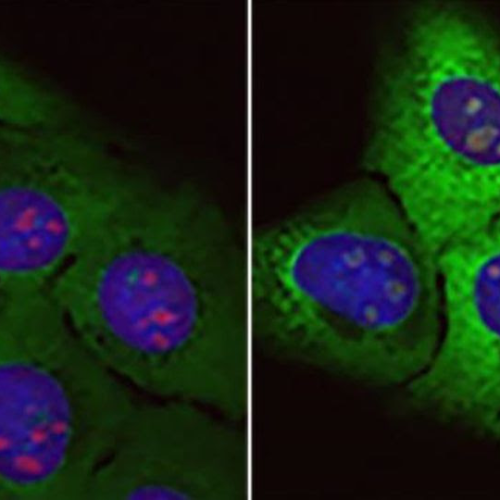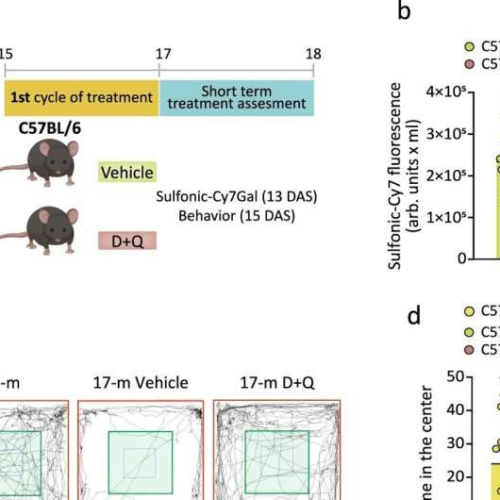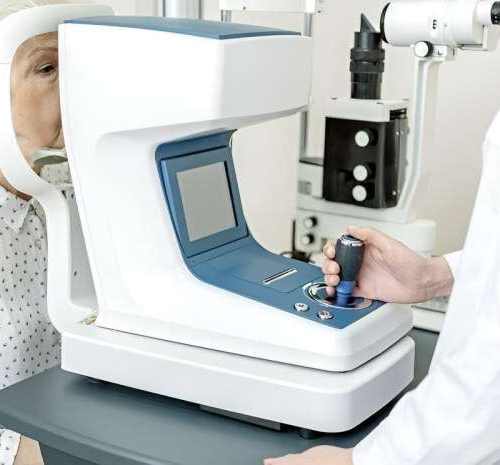Credit: Pixabay/CC0 Public Domain Mayo Clinic researchers have found that senescent cells—non-dividing “zombie” cells—accumulate in the skin as people age and may influence aging in other parts of the body. Their recent study revealed that transplanting senescent skin cells into a preclinical model revealed that they not only caused that senescence to spread to other...
Category: <span>Anti-aging</span>
UMD-led Study Could Lead to Lengthened Lives for Patients With Premature Aging Disease
UMD researchers found that adding a protein to cells that line blood vessels might be able to improve the cardiovascular health of people with the disease progeria, which causes accelerated aging and death from heart attack or stroke when those afflicted with the disease are teenagers. This confocal image shows a wild-type aorta stained with...
CAN ‘NANOFLOWERS’ RECHARGE CELLS TO FIGHT AGING?
Researchers are using nanotechnology to recharge the “powerhouse of the cell” to fight against disease and aging. The ability to recharge cells diminishes as humans age or face diseases. Mitochondria, often called the powerhouse of the cell, are central to energy production. When mitochondrial function declines, it leads to fatigue, tissue degeneration, and accelerated aging. Activities...
No organ is an island: Genetic study shows unique but interconnected aging markers
By Dr. Chinta Sidharthan Reviewed by Susha Cheriyedath, M.Sc. Jul 2 2024 In a recent study published in the journal Nature Aging, a team of researchers used a large dataset consisting of participants of European ancestry from the United Kingdom (U.K.) Biobank to explore the genetic underpinnings of the biological age gap or BAG, a...
Drugs that kill ‘zombie’ cells may benefit some older women, but not all, study finds
by Mayo Clinic Credit: CC0 Public Domain Drugs that selectively kill senescent cells may benefit otherwise healthy older women but are not a “one-size-fits-all” remedy, Mayo Clinic researchers have found. Specifically, these drugs may only benefit people with a high number of senescent cells, according to findings published July 2 in Nature Medicine. Senescent cells...
Junk Proteins” Associated With Cause of Aging and ALS Progression
Original story from CNIOAccumulation of “junk proteins”: normal cells (left) and cells subjected to the effect of the toxic arginine-rich protein (right). In the latter, ribosomal proteins (green fluorescent) and the size of nucleoli (red) are increased.Credit: CNIO. Amyotrophic lateral sclerosis (ALS) is a degenerative disease. The neurons responsible for movement begin to die and...
Exploring the effects of dasatinib, quercetin, and fisetin on DNA methylation clocks
by Impact Journals LLC Correlation between epigenetic clocks and immune cell types. The size of the dots is proportional to the correlation value, being blue a positive correlation and red a negative correlation. Credit: Aging (2024). DOI: 10.18632/aging.205581A new research paper titled “Exploring the effects of dasatinib, quercetin, and fisetin on DNA methylation clocks: a...
Factors associated with age-related hearing loss differ between males and females, finds study
by Public Library of Science The study suggests that factors associated with age-related hearing loss differ between males and females. Credit: Mark Paton, Unsplash, CC0 (creativecommons.org/publicdomain/zero/1.0/)Certain factors associated with developing age-related hearing loss differ by sex, including weight, smoking behavior, and hormone exposure, according to a study published in the open-access journal PLOS ONE by Dong...
How do we age? New probe can detect senescent cells in urine
by Universitat Politècnica de Valènci Monitoring of senolytic intervention with the sulfonic-Cy7Gal probe during natural aging. a Schedule of the senolytic treatment and its monitoring in C57BL/6 mice. 15-m mice received the senolytic drugs D + Q or the vehicle for 5 weeks and, 13 days after senolysis (DAS), the overall β-Gal activity was assessed with sulfonic-Cy7Gal...
Vision impairment linked to several psychosocial outcomes in seniors
by Elana Gotkine In adults 65 years and older, vision impairment is associated with psychosocial outcomes, including symptoms of depression, anxiety, and social isolation, according to a study published online Feb. 22 in JAMA Ophthalmology. Louay Almidani, M.D., from the Johns Hopkins University School of Medicine in Baltimore, and colleagues conducted a cross-sectional analysis of...




